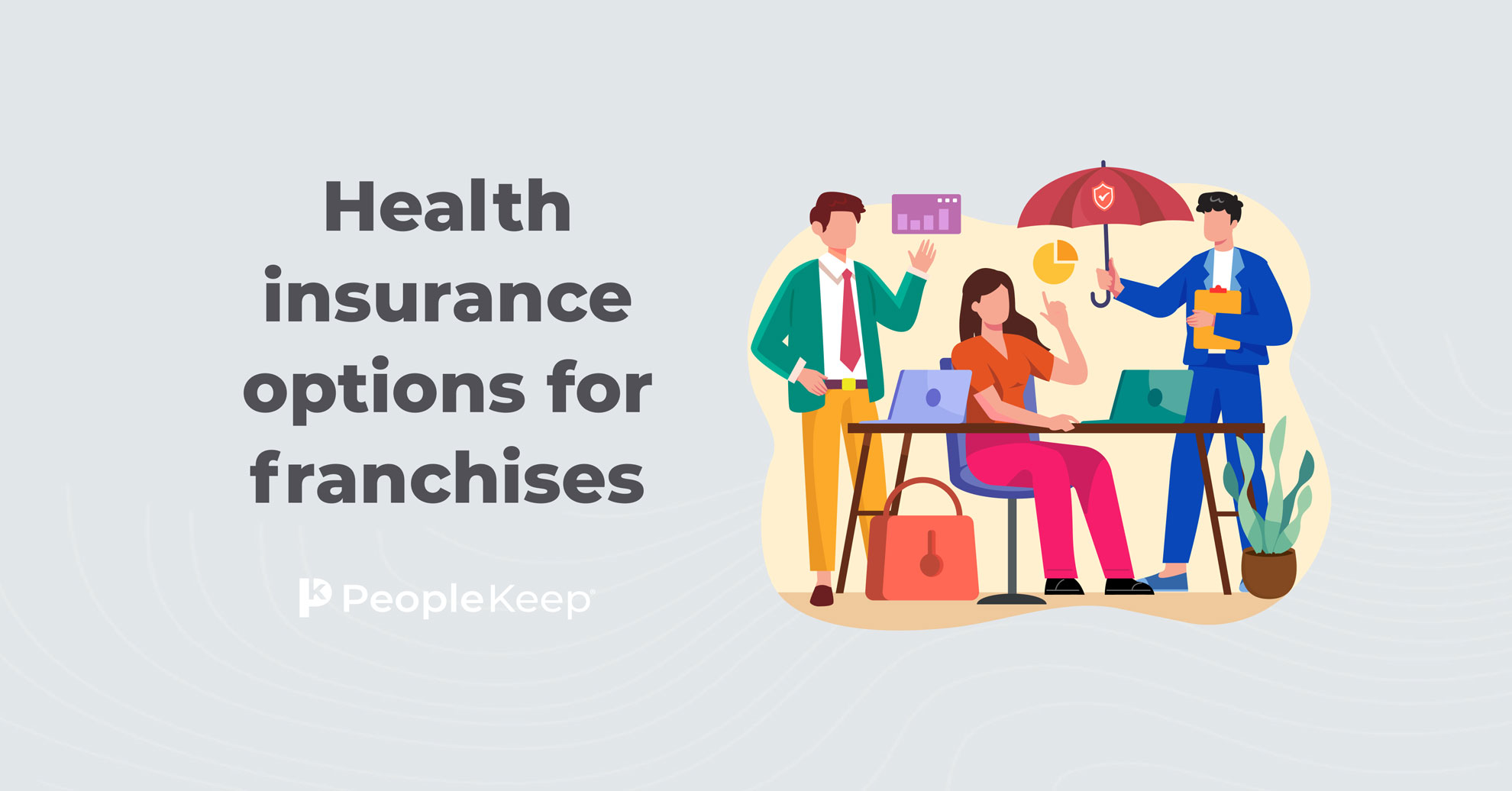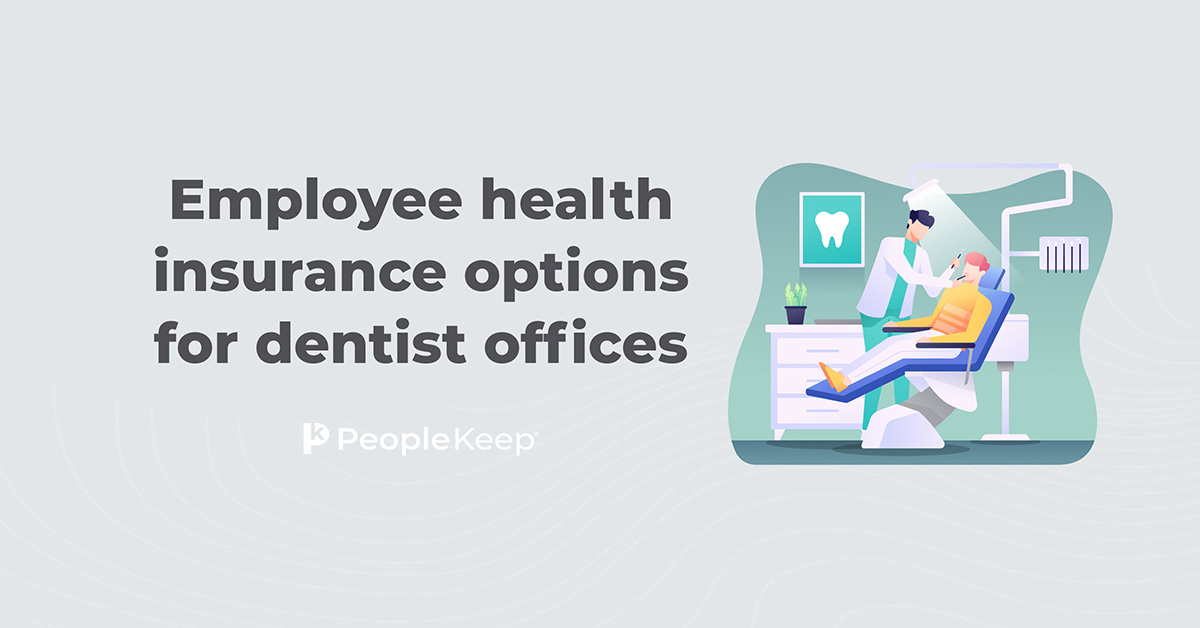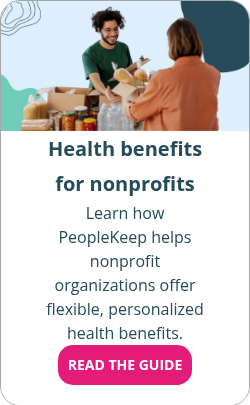Are HRAs or HSAs a better nonprofit benefit offering?
By Holly Bengfort on March 19, 2024 at 10:38 AM
Increasing health insurance costs are inevitable amidst inflation and rising medical costs. Unfortunately, for many nonprofit organizations, increased budgets aren't as certain. This makes balancing the cost of health benefits and pay raises with other organizational costs more challenging for nonprofit employers.
Many nonprofit employers who can afford a group health insurance policy choose to offer a high deductible health plan (HDHP) to keep their employee benefit costs in check. To help their employees with out-of-pocket costs, they can choose to add a health savings account (HSA) or a group coverage health reimbursement arrangement (GCHRA) to their HDHP. But are these options worth the investment? And which one is better?
In this blog post, we'll go over why nonprofits should offer health benefits, how they can supplement their plans, and affordable alternatives to group health insurance coverage.
Takeaways from this blog post:
- Health savings accounts (HSAs) allow employers and employees to save pre-tax funds for eligible medical costs, such as deductibles or copayments, which can help reduce overall healthcare expenses.
- Nonprofits can use a GCHRA, also known as an integrated HRA, to provide tax-free reimbursement to employees for out-of-pocket medical expenses before they reach their deductible.
- The qualified small employer HRA (QSEHRA) and the individual coverage HRA (ICHRA) are two other popular options nonprofits can use to reimburse employees tax-free for medical expenses and insurance premiums instead of offering a costly group plan.
Why is it important to offer health insurance benefits as a nonprofit?
A robust benefits package for a nonprofit is a powerful tool for employee recruitment and retention, which is a huge plus if your salaries aren't as competitive as those offered by for-profit companies.
Findings from our 2022 Employee Benefits Survey Report show that 82% of employees say that the benefits package an employer offers is an important factor in whether or not they accept a job. Additionally, 87% of employees value health benefits like health insurance. A comprehensive health benefits package is a proven way to stay competitive while keeping your employees healthy and happy.
On the other hand, depending on the size of your organization, the federal government may require you to offer health insurance. If you employ 50 or more full-time equivalent employees (FTEs), you must provide at least 95% of your full-time employees with health insurance to satisfy the Affordable Care Act's (ACA) employer mandate.
While not offering health benefits as a small nonprofit may save you money in the short term, cutting this benefit may cause a spike in employee turnover and hurt morale—costing you far more in the long run.
How can nonprofits offer more robust health insurance benefits?
One way nonprofits with fewer than 50 FTEs can find affordable and comprehensive health insurance plans is through the Small Business Health Options Program (SHOP) Marketplace. With SHOP, brokers can help you select small group plans through the public exchange. The federal government doesn’t require nonprofits to use the SHOP Marketplace, but you’re eligible for it as long as you have fewer than 50 employees.
Using SHOP qualifies nonprofits to claim the Small Business Health Care Tax Credit, which can help them afford a more robust group health plan. But, SHOP plans can still be too expensive for small nonprofits to offer. Group health insurance plans often have steep rate increases each year. And you may not satisfy the minimum participation rate for the plan.
If you don’t want to utilize the SHOP method, you have the option of enrolling in a group HDHP through a broker or carrier and supplementing that policy with an HSA or a GCHRA for a more well-rounded and cost-effective health benefit.
Health savings accounts (HSAs)
An HSA lets you and your employees set aside pre-tax money to pay for qualified medical expenses. Employees can lower their overall healthcare costs by using pre-tax dollars to pay for health insurance deductibles, copayments, coinsurance, and other expenses. Plan holders can use their HSA to pay for more than 200 eligible expenses, as outlined in IRS Publication 502. Employees often receive a debit card they can use directly for these out-of-pocket expenses.
The IRS updates HSA maximum contribution limits for individuals and families each year. If you’re new to HSAs, it helps to check which insurance policies are considered HSA-compatible health plans beforehand so you can guarantee you’re selecting the right one before you purchase it.
While HSAs are a popular option, they have limitations. Employees must have an HSA-qualified HDHP to contribute to an HSA. And because HSAs are employee-owned accounts, they can take their funds with them when they leave your organization—even if their employer contributed those funds. If you want more flexibility when supplementing your group plan, a GCHRA is often a better option.
Group coverage HRAs (GCHRAs)
As budget-conscious nonprofits seek to offer employees the best medical care they can, a GCHRA can be an ideal solution. While HRAs are similar to HSAs, they operate in a way that may be more cost-effective for nonprofit organizations.
With a GCHRA, also sometimes called an integrated HRA, employers can set their own allowance to reimburse employees, tax-free, for out-of-pocket medical expenses. This includes copays, other cost-sharing expenses, and expenses before employees meet their deductible. This allows organizations to minimize the impact of an HDHP on employees.
A GCHRA also works alongside any group plan, not just an HDHP. This gives you more options to choose the plan that best fits the needs of your organization and your employees.
Also, a GCHRA isn’t portable. The employee doesn’t keep the benefit or allowance when they leave their nonprofit. The employer only reimburses employees for eligible expenses incurred before their departure. Also, unlike other HRAs, employers aren’t restricted to compatible plans through any individual provider and can keep their HRA even if they change providers.
Alternatives to group health insurance coverage
Group health insurance coverage is the traditional choice among many employers. But most nonprofits don't have the luxury of paying the high price that comes with a policy. KFF1 reported that in 2023, the average annual cost of employer-sponsored health insurance premiums per employee was $23,968 for family coverage and $8,435 for single coverage.
Stand-alone HRAs and health stipends are excellent alternatives to traditional group health insurance for nonprofits. Let’s review these two flexible options below.
Stand-alone health reimbursement arrangements (HRAs)
An HRA is a cost-effective alternative to traditional group health coverage. As mentioned with the GCHRA, HRAs allow employers to reimburse employees for their medical expenses. Employees can use the funds to pay for doctor visits, chiropractic care, dental care, mental health counseling, prescription drugs, over-the-counter drugs, and other medical costs.
Instead of offering a group plan, you can reimburse your employees for individual health insurance policies. This gives your employees more control over their healthcare.
With an HRA, reimbursements are free of payroll taxes for employers. Employees also receive tax-free reimbursements when they're covered by a policy that provides minimum essential coverage (MEC).
On top of the tax benefits, there's cost control for the employer. Employers set their own allowance amount, which means they can offer as much or as little as they would like. They don't have to worry about insurance companies raising their prices or the participation requirements that come with group health insurance. Plus, unlike an HSA, unused HRA funds stay with the employer.
Two of the most popular HRAs include:
- The qualified small employer HRA (QSEHRA): The QSEHRA is for small organizations with fewer than 50 FTEs. With a QSEHRA, nonprofits can reimburse employees for the cost of insurance premiums, out-of-pocket healthcare expenses, or both. The QSEHRA also applies to all W-2 employees regardless of their insurance status. However, it has annual maximum limits for contributions, which means employers can only offer so much each year.
- The individual coverage HRA (ICHRA): The ICHRA works for organizations of all sizes. With an ICHRA, nonprofits can reimburse employees for qualifying individual health insurance premiums, out-of-pocket costs, or both. Employers can also offer a greater allowance than they could with a QSEHRA since there are no maximum limits. Employers can also separate employees by class. This way, they can offer different allowance amounts to different employees, such as salaried employees and hourly employees. But, employees must have their own individual plans with MEC to participate.
Health stipends
If you're not sold on HRAs, you may want to consider offering an employee stipend for healthcare spending. You pass up the tax savings in return for fewer regulations and restrictions.
There are no eligibility requirements or minimum monthly allowances with a health stipend. You're essentially just adding a set amount of money to your employee's taxable income that's intended for healthcare-related expenses, such as insurance coverage or medical services. But, unlike an HRA, employers can’t ask for proof of insurance or receipts for eligible expenses.
Nonprofits of all sizes can offer a health stipend. However, if you have 50 or more FTEs, you can’t offer a stipend instead of an ICHRA or a group plan.
How to administer your health benefit
Most nonprofits are tight on money and resources. For these reasons, the idea of self-administering can be tempting. But this will take more time and effort on your part. Self-administration of health benefits means taking full responsibility for compliance with IRS, HIPAA, and ERISA regulations, which can be risky.
At PeopleKeep, we’re experts on HRA administration and help thousands of employers reimburse their employees every day. Our services streamline the process of providing an HRA by conducting documentation reviews for out-of-pocket costs, offering customer support, and creating plan documents to ensure compliance and privacy. With our easy-to-use software, you can set up and manage your health benefit in just minutes each month.
Conclusion
As a nonprofit employer, it's important to provide your employees with healthcare benefits that help them maintain their physical health and mental well-being. Three popular options for healthcare coverage are group health insurance, health savings accounts (HSAs), and health reimbursement arrangements (HRAs).
Ultimately, the decision comes down to what will best meet the needs of your organization and your employees. Consider factors such as your budget, employee demographics, and the level of control and flexibility you want to provide to your employees. Whichever option you choose, providing a health benefit can create a positive and healthy work environment for your employees.
This article was originally published on September 3, 2020. It was last updated on March 19, 2024.
Check out more resources
See these related articles

Health insurance options for franchises
Are you a franchise owner? Explore your health insurance options with this comprehensive guide, tailored specifically for franchises.

What is healthcare reimbursement?
Looking to reimburse your employees for their healthcare expenses? Learn everything you need to know about healthcare reimbursement.

Employee health insurance options for dentist offices
Finding the right health benefit for your dental practice is essential. Discover the different health insurance options tailored for dental professionals.



